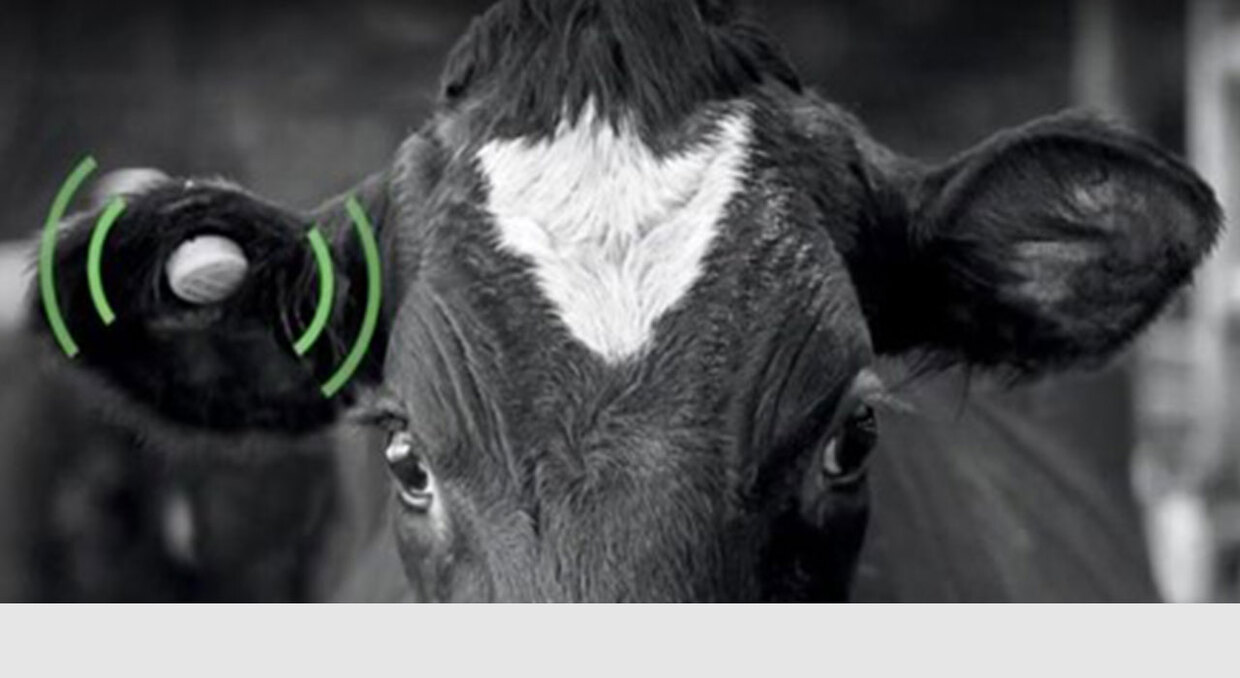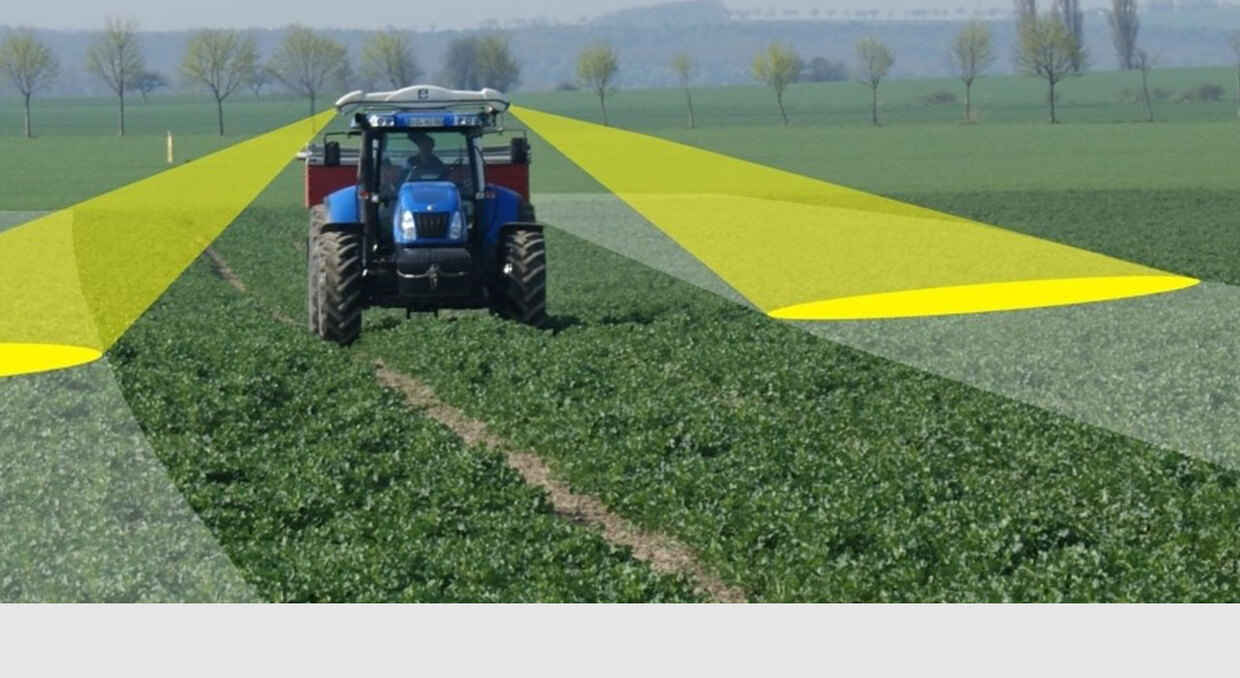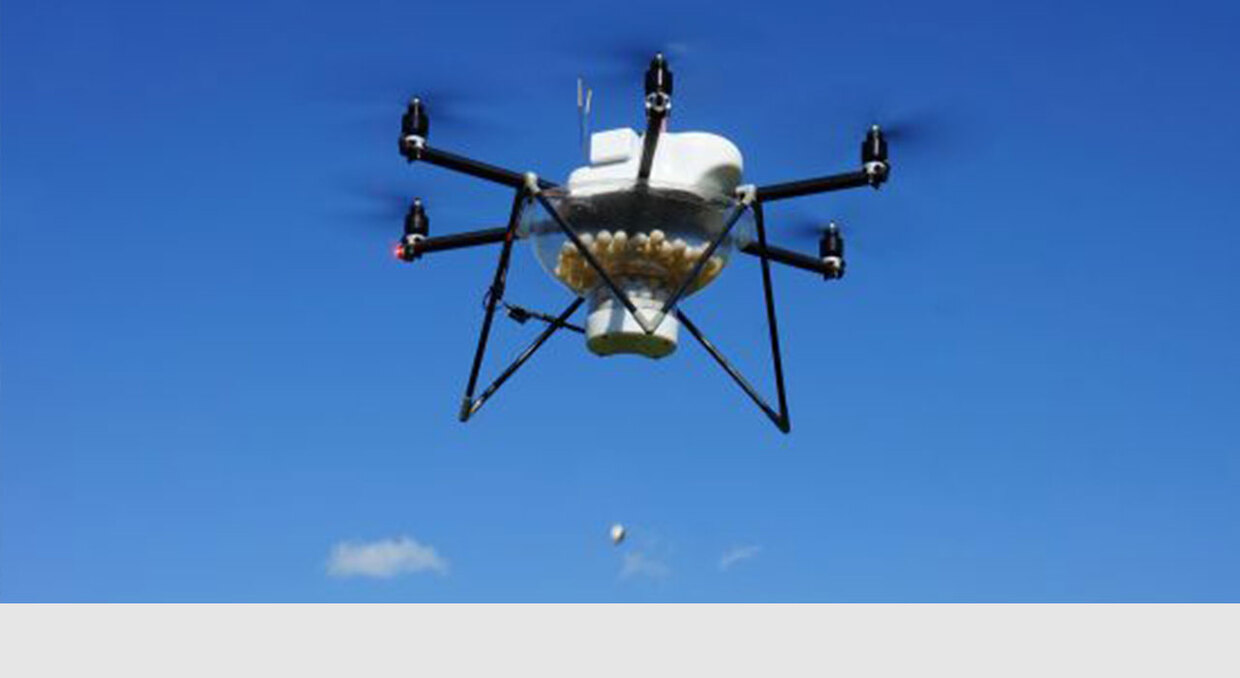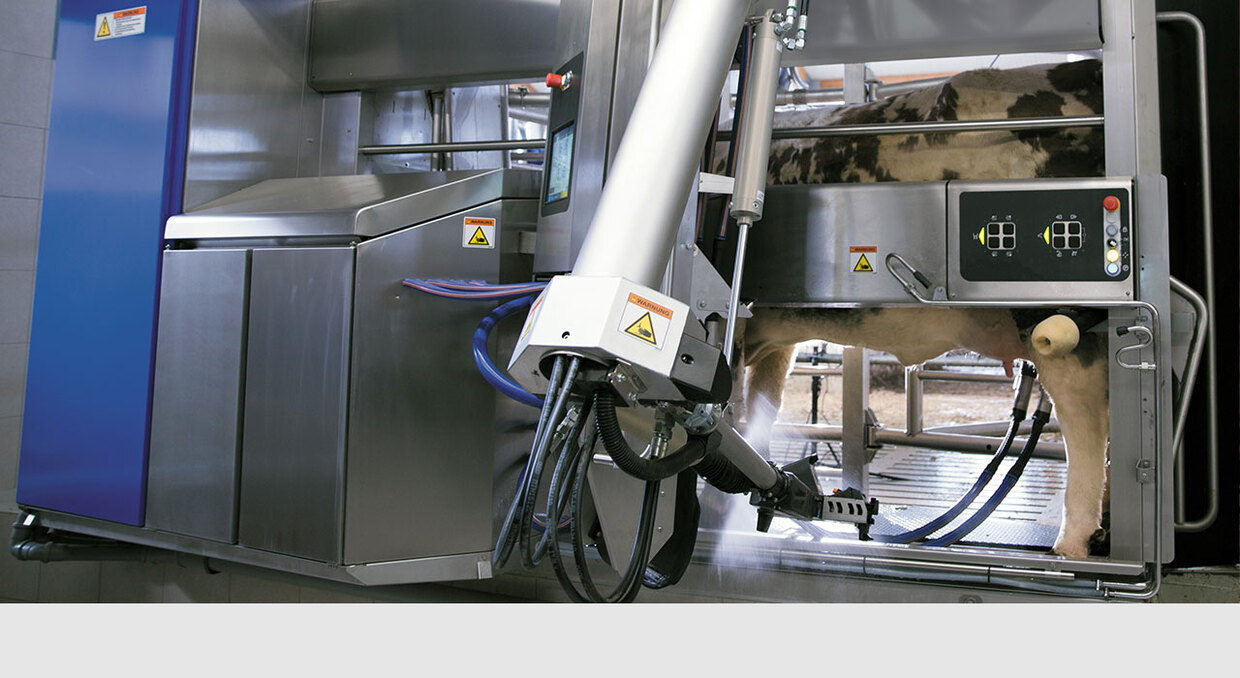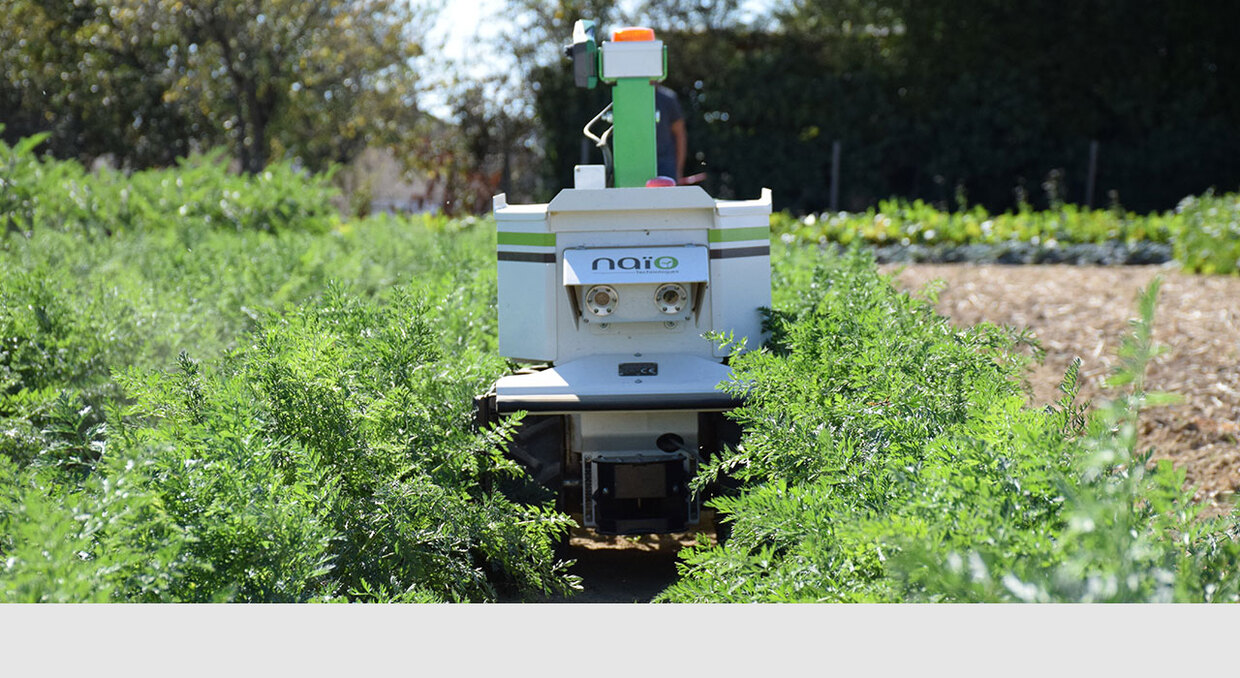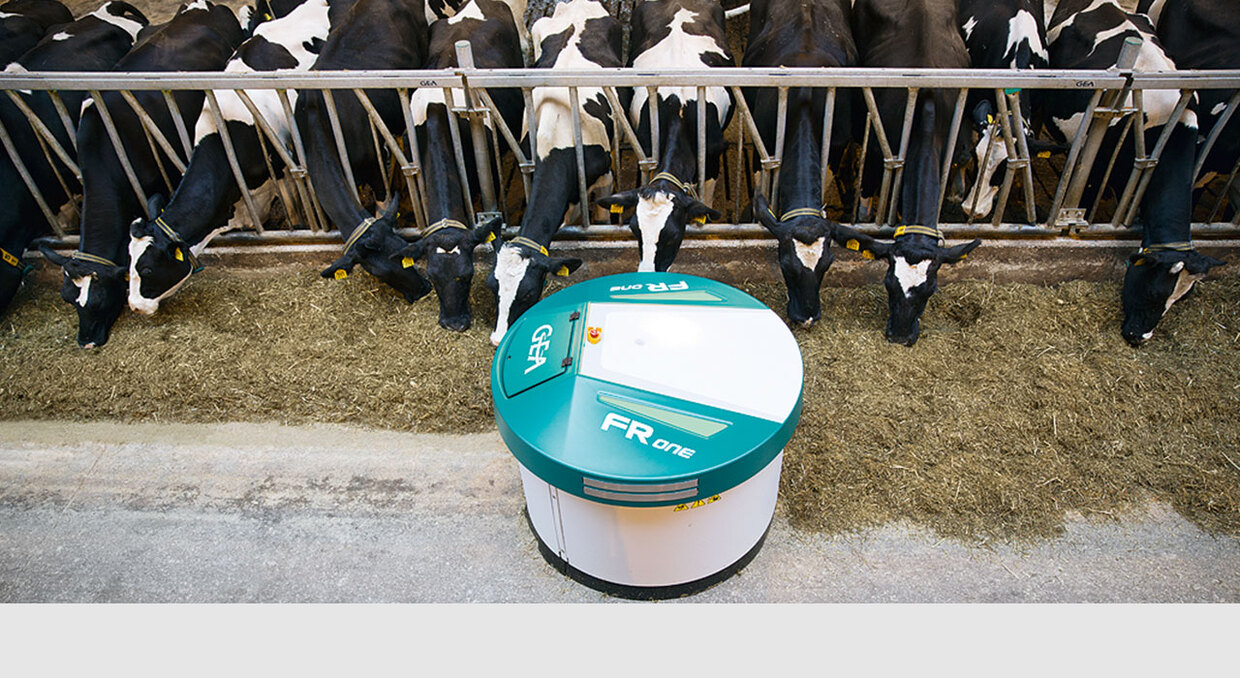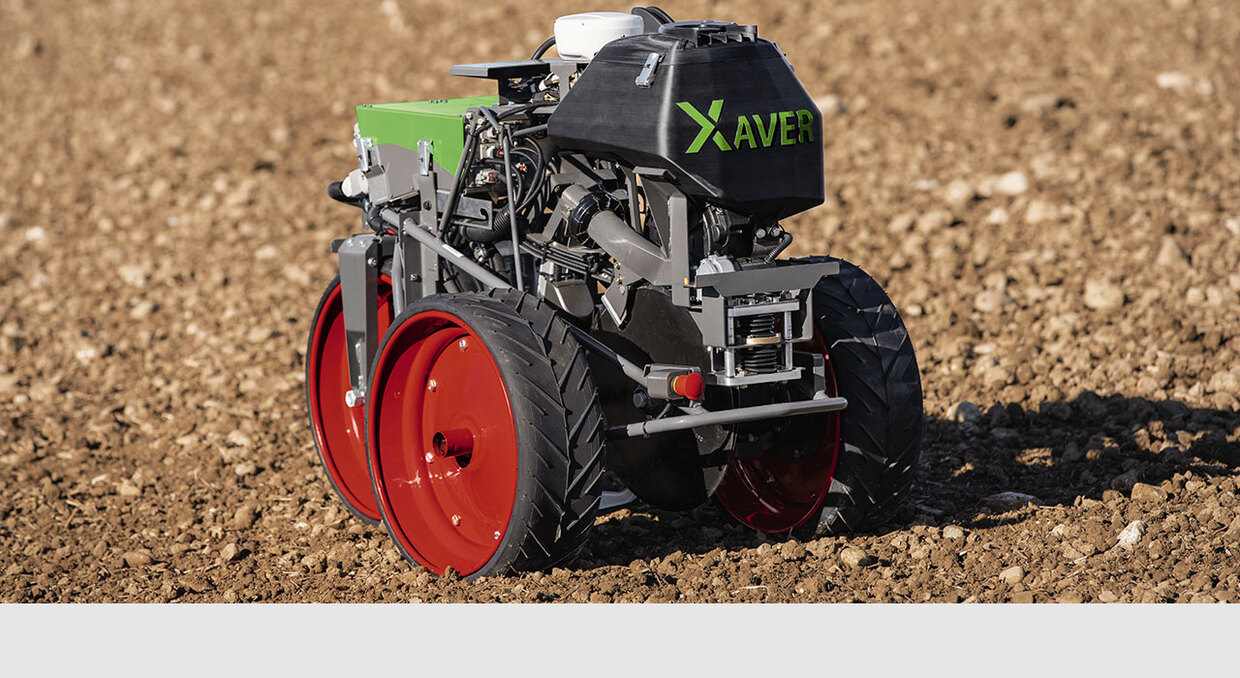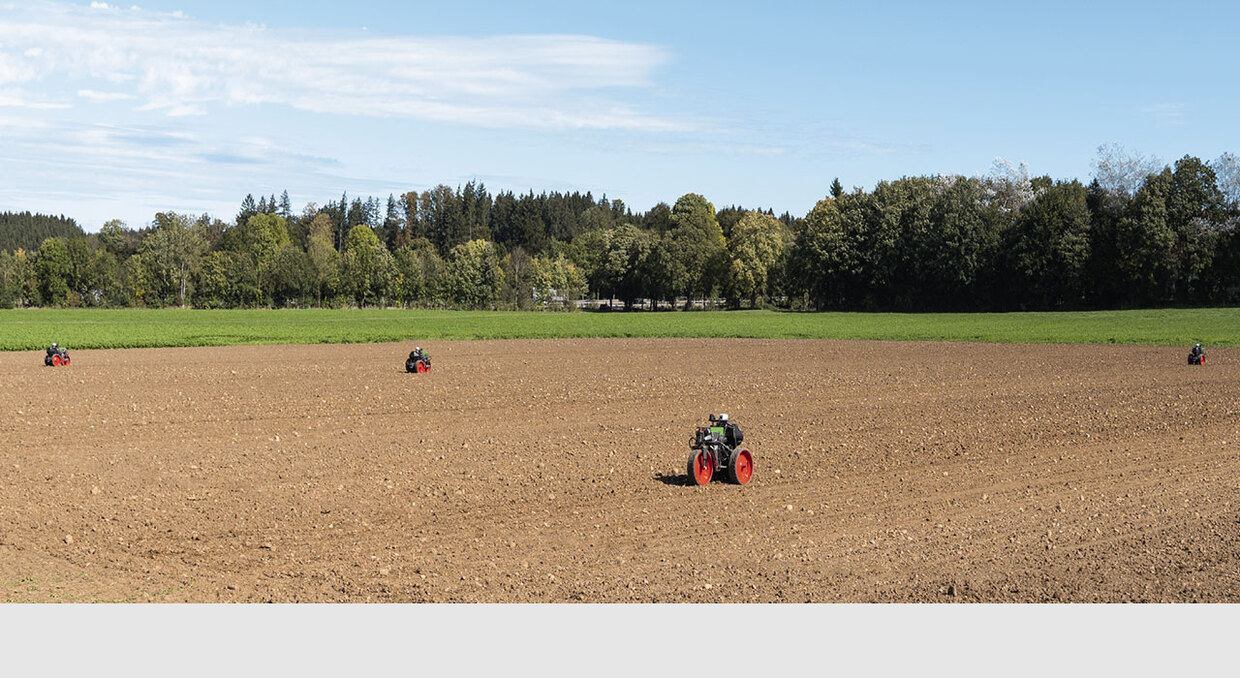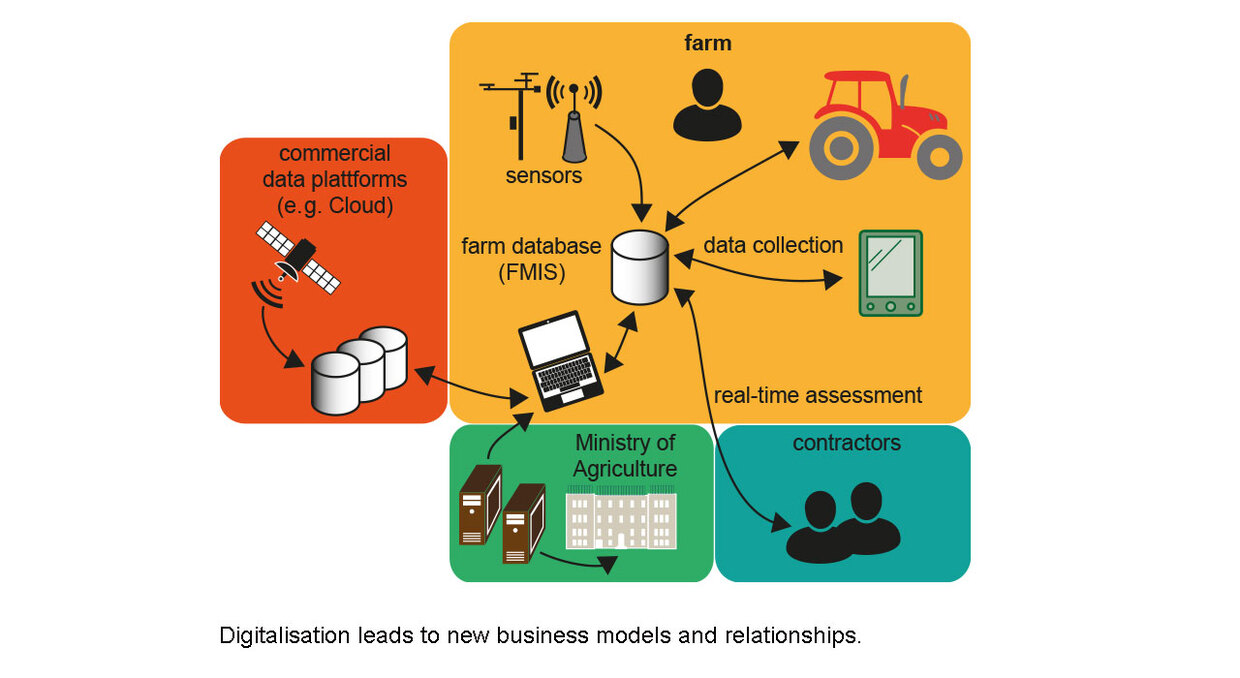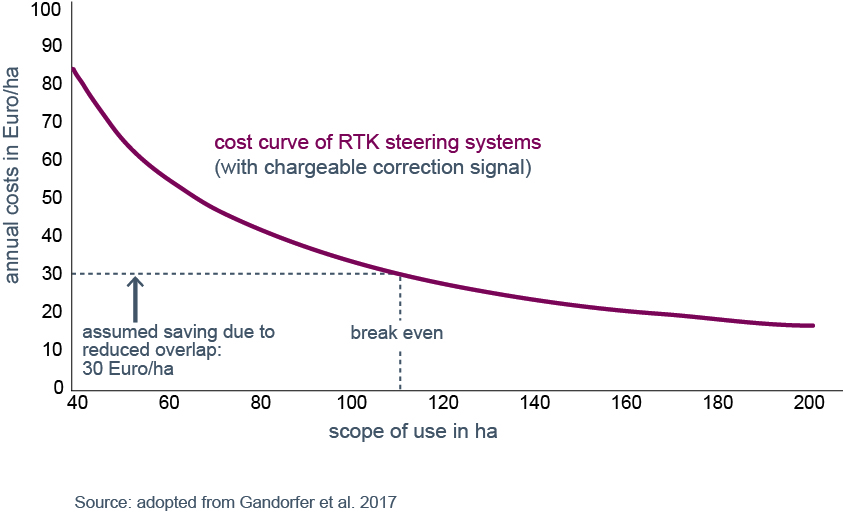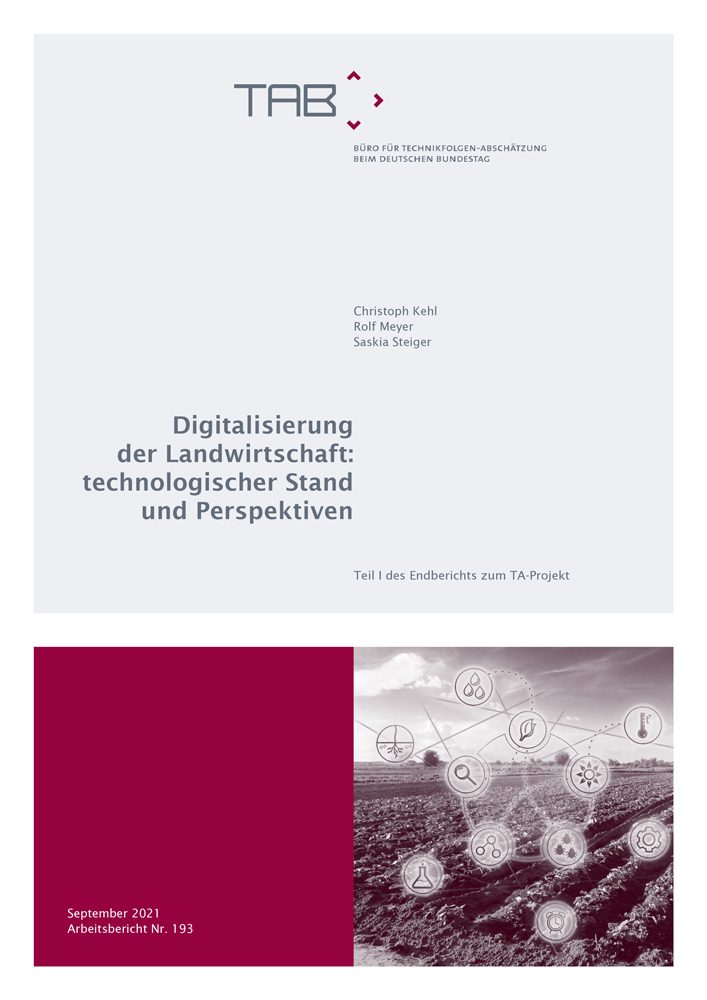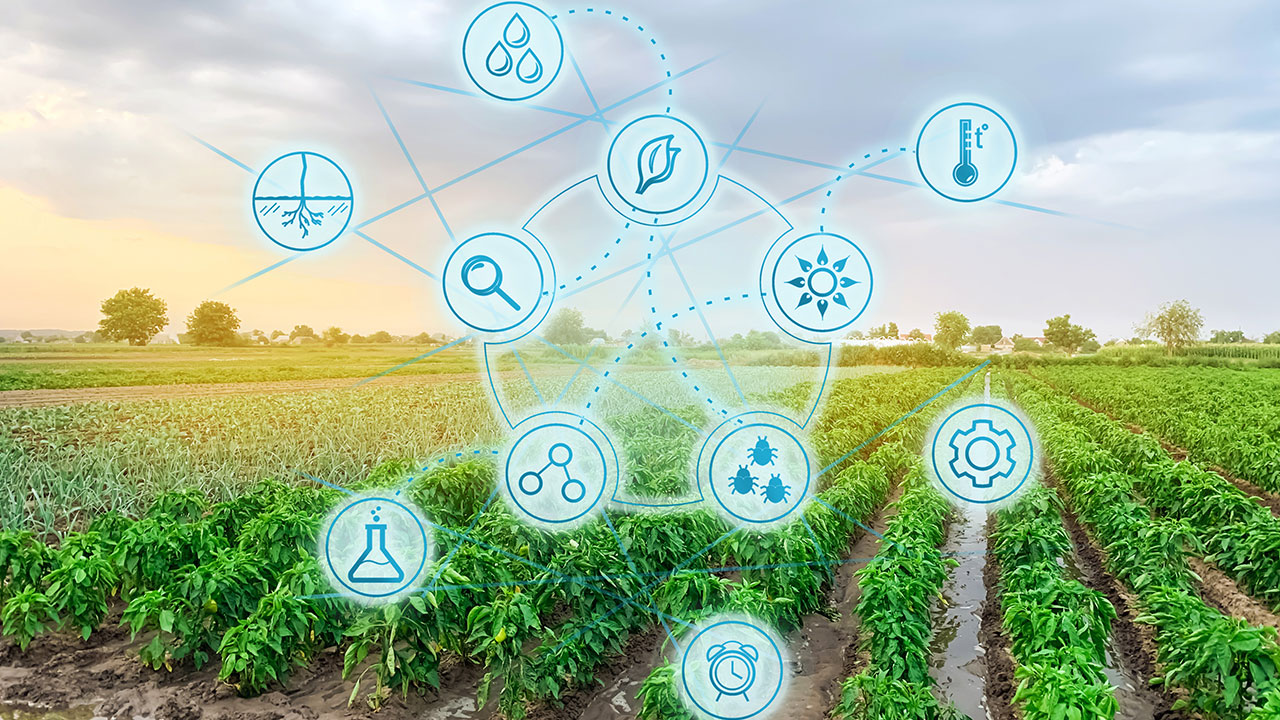
Digitisation of agriculture
- Project team:
Christoph Kehl (Project manager)
- Thematic area:
- Topic initiative:
Committee on Education, Research and Technology Assessment
- Analytical approach:
TA project
- Startdate:
2017
- Enddate:
2021
Digitisation raises hopes for more efficient and sustainable agricultural production

Digital technologies are becoming increasingly important in agricultural practice and meanwhile penetrate all areas of agricultural technology. As in many economic sectors, this is opening up new opportunities for data-based control of production processe in agriculture as well. This sparks the vision of systematically interlinking and integrating agricultural machinery and processes – not only at farm level, but across the entire upstream and downstream value-added chain. But is this idea feasible? And what would be the implications of a comprehensively networked agriculture?
At a glance
sprungmarken_marker_3076
Many digital agricultural technologies are ready for practical use or in advanced development, but widespread application is still pending
Of particular importance are developments in the areas of sensor technology, agricultural machinery, drones and robots. Corresponding solutions are used both in the field and in the stable. They collect large volumes of process data and thus form the basis for far-reaching digitisation of agricultural production. While individual digital agricultural technologies are already being used on a larger scale (e.g. milking robots or satellite-based navigation and assistance systems), particularly innovative applications such as variable-rate application, agricultural robots or drones are still rather uncommon in agricultural practice.
Focus on individual plants? Increased automation could fundamentally change agricultural production processes in the future
Although the technical development of digital agricultural technologies is already well advanced, they are still often used as stand-alone solutions. The greatest potential is seen in the comprehensive data-based networking and control of these applications at farm level. In connection with increasing automation, this development offers the potential to gear agricultural processes more closely to the individual plant or animal. One example is the use of swarm-based robots, which could also manage extensive fields on a small scale - instead of ever larger agricultural machinery with its negative effects like soil compaction or capital requirements etc.
The extent to which digitisation can contribute to more sustainable agricultural production is still unclear
With the help of digitisation, the use of inputs like pesticides or fertilizers should also be reduced. This offers the opportunity to make agricultural operations not only more economical, but also more sustainable. However, there is still a great deal of uncertainty regarding the magnitude of the achievable environmental effects. Given the diverse application areas and use conditions, there is still a lack of sufficient scientific data for a well-founded assessment. The TAB report presents the state of knowledge regarding the environmental impacts of the various agricultural technologies in detail.
With further technical development, additional environmental benefits can be expected in the future. However, digital agricultural technologies alone are hardly sufficient to remedy some important environmental and animal welfare problems in agricultural production (such as over-fertilisation resulting from intensive livestock farming).
Digital transformation is giving rise to entirely new business models - who benefits?
More and more data is being collected directly from agricultural machinery and on the farm, transferred to the cloud and analyzed there. Due to the growing importance of digital platforms and business models, the agricultural industry is undergoing a fundamental transformation process. New data service providers are entering the market and most of the established agricultural companies are also setting up their own digital divisions. As the longer-term tendency toward market concentration is usually particularly high in platform markets, the existing monopolization trends in the agricultural industry could become even stronger. The responsible development of digital agriculture therefore depends to a large extent on the degree to which farmers will also be given the opportunity to adequately benefit from the digital value created with their data.
A major challenge is to ensure access to digital technologies also for smaller farms
The prospect of increased efficiency and savings is one of the great promises of digital agricultural technologies. However, a major application hurdle is the relatively high investment costs, which mean that many digital solutions are only economically viable for larger farms. It is therefore assumed that in the course of digitisation, the economic pressure on smaller and medium-sized farms could intensify and their numbers could continue to decline. Thus, it is an important political task to ensure that all farms can benefit from the advantages of innovative agricultural technologies. RTK steering systems for precise control of agricultural machinery are an instructive example for the economies scale: With an assumed saving of 30 Euro/ha due to reduced overlap, the break-even point is over 110 ha (Fig.). For comparison: The average size of German farms in 2020 was 63 ha.
Downloads
|
|
TAB-Arbeitsbericht Nr. 193 (only in German) |
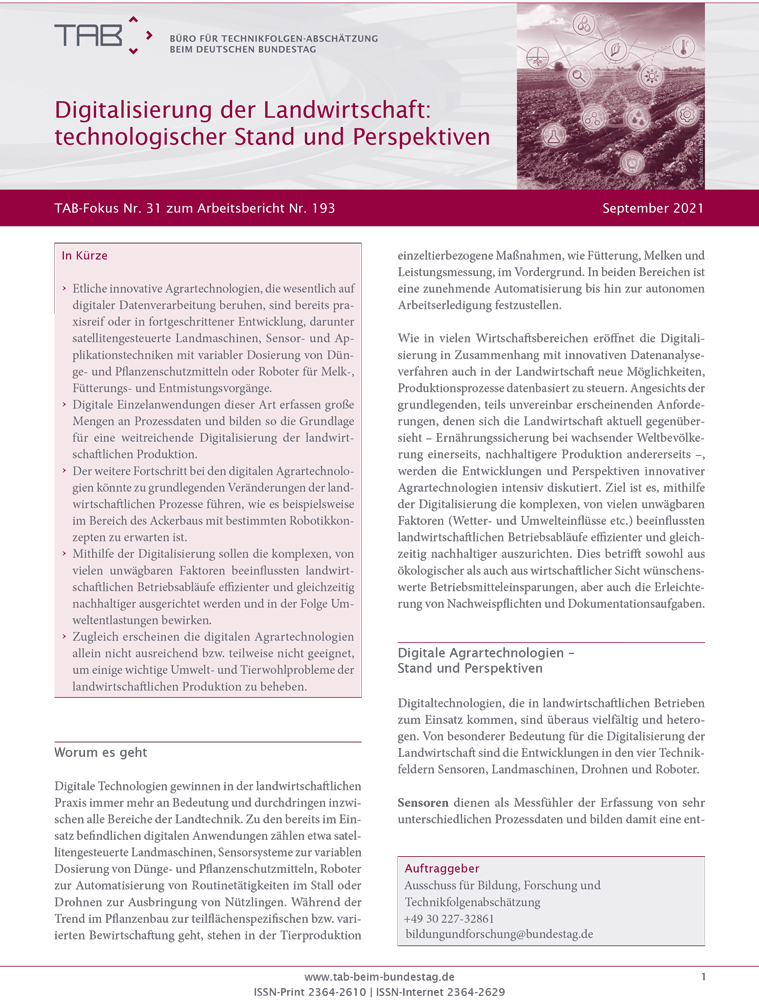 |
TAB-Fokus no. 31
TAB-Fokus Nr. 31 (only in German)
|
 |
TAB-Arbeitsbericht Nr. 194 (only in German) |
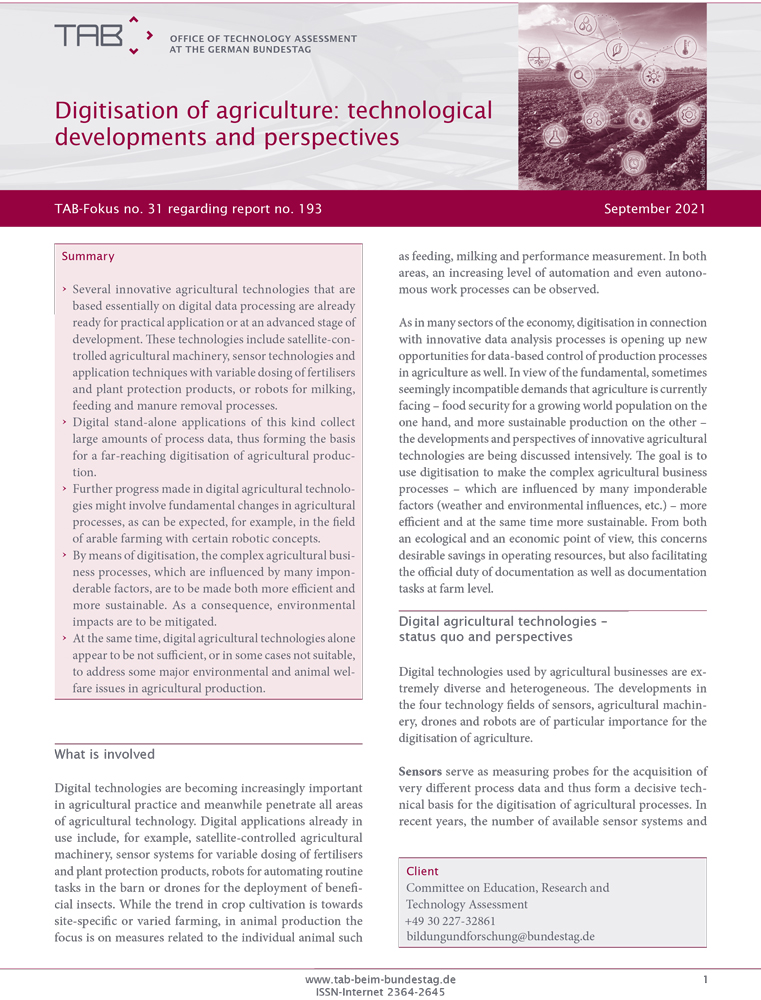 |
TAB-Fokus no. 32
TAB-Fokus Nr. 32 (only in German) |
Im Bundestag
Vorgänge - Bericht, Gutachten, Programm in the Documentation and Information System for Parliamentary Materials (DIP)
Earlier publications on the topic
Rösch, C.; Dusseldorp, M.; Meyer, R.
2007. DFV Mediengruppe
Rösch, C.; Dusseldorp, M.; Meyer, R.
2005. Büro für Technikfolgen-Abschätzung beim Deutschen Bundestag (TAB). doi:10.5445/IR/1000137991
Rösch, C.; Dusseldorp, M.; Meyer, R.
2005. Büro für Technikfolgen-Abschätzung beim Deutschen Bundestag (TAB). doi:10.5445/IR/1000132428

